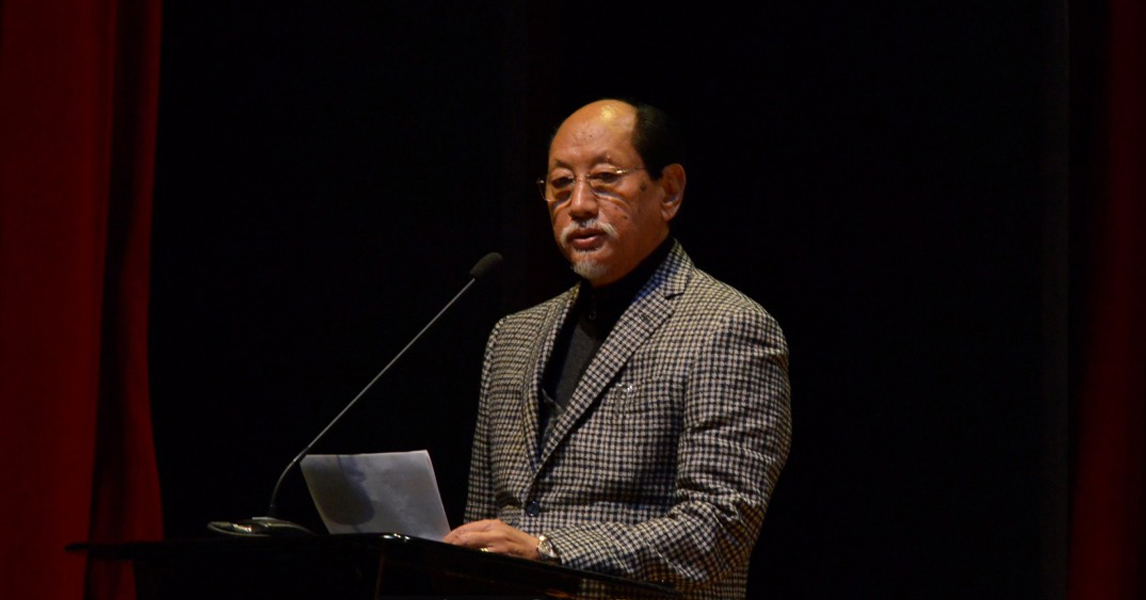To safeguard the rights of indigenous inhabitants, the Nagaland government has issued new guidelines for the issuance of the Indigenous Inhabitant Certificate (IIC). The updated criteria, outlined in an official notification, aim to streamline the process and ensure that only eligible citizens of recognized tribes receive the certificate.
According to the notification dated September 20, issued by Home Commissioner Vyasan R, the IIC will be issued to members of 15 recognized Naga tribes—Angami, Ao, Chakhesang, Chang, Konyak, Khiamniungan, Lotha, Pochury, Phom, Rengma, Sumi, Sangtam, Tikhir, Yimkhiung, and Zeliang—as well as to the Kachari, Kuki, Garo, and Mikir (Karbi) tribes, as recognized under ‘The Constitution (Nagaland) Scheduled Tribes Order, 1970.’ To be eligible, applicants must trace their lineage to a recognized village in Nagaland.
Each recognized village will have a Village Verification Committee, nominated by the Village Council Chairman. The committee will include: a member of the village council (convenor); Head GB or senior most (by age) Gaon Bura; president of village youth organization; head teacher GMS/GPS; female VDB member; representative of the village women’s organization; representatives of the Khels in villages where the Khel system is in place and one representative(s) from the Church in the village.
The committee’s member list must be submitted to the Deputy Commissioner’s office through the area administrative officer by January 10 each year. Only officially notified committee members may verify IIC applications.
Application forms for the IIC will be available at all DC and ADC offices for Rs 200, which includes the certificate fee. The Village Verification Committee will verify and attest the information provided by applicants, including: a) The name of the father and mother along with their village; b) The names of the paternal grandfather and the paternal great grandfather along with their village; c) If there has been any case of adoption at any level, the applicant shall be required to disclose the details. This is to be verified by the Village Verification Committee. Withholding or misrepresentation of any information in this regard by the applicant or the village verifying committee will be tantamount to claiming of false identity and liable for criminal prosecution and d) The Village Verification Committee shall keep a written record of its meetings with attendance and recommendations made for each application received.
After verification by the Village Verification Committee, the application, along with the necessary identity and residency documents, will be submitted to the area administrative officer. If satisfied, the officer will forward the application to the DC’s office within five working days. If additional verification is required, this process may extend to 10 working days.
The DC’s office will examine all applications and verify the details before issuing the IIC. Only the Deputy Commissioner, or in their absence, the ADC (HQ), is authorized to issue the certificate, which will contain a unique, permanent, and non-transferable number. This number must be quoted in any reapplication.
The DC as the issuing authority is empowered to refuse or cancel an IIC if it is found that the claims made by the applicant are found to be false. Any application where there has been an adoption of the applicant or his/her parents whether from within the indigenous Naga community or otherwise must be referred to the P&AR department for decision.
The DC will send monthly reports of all certificates issued and rejected, to the office of the Commissioner, Nagaland and also daily upload the details of all such certificates issued on the office website.
It further warned that submission or authentication of false information by the applicant or any community-based authority for the issue of IIC will be tantamount to a criminal offence. The certificate of the applicant if issued on false claims will be cancelled and any benefits accrued on its basis will also be cancelled.
The members of the Village Verification Committee that authenticated the false claims shall also be penalized by being removed from office and shall be debarred from holding any office for 5 (five) years: besides actions against them under the appropriate provisions of law.
Further, Government servants found responsible for such offenses will face disciplinary action. If a criminal offense is established, appropriate charges will be brought against them, and the case must be resolved, either through exoneration or the imposition of penalties.
The notification stated that the following documents are to be submitted along with the application form to the area administrative officer:
· Proof of identity– physical identification mark; anyone of the following i. Class X admit card; ii. Aadhaar card; iii. Passport.
· Proof of residence (any one of the following)– i. Passport; ii. Aadhaar card; iii. Bank pass book; iv. Driving License and v. Ration Card.
It has also been made mandatory that newborn children of indigenous inhabitants must register for the IIC within six months of birth in the requisite form along with the birth certificate and copy of IIC of the parents. The unique registration number must be quoted when applying for an IIC later when required.
The Home department informed that the provisions of this notification will come into force with effect from the date of issue of this Office Memorandum. The notification has been issued in pursuance of Cabinet decision dated September 12, 2024.



